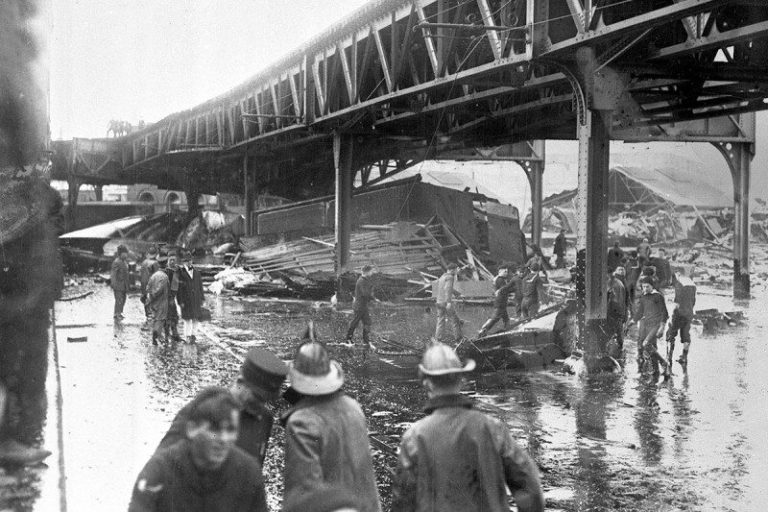
The deluge crushed freight cars, tore Engine 31 firehouse from its foundation and, when it reached an elevated railway on Atlantic Avenue, nearly lifted a train right off the tracks. All that thick syrup ripped apart the cylindrical tank that once held it, throwing slivers of steel and large rivets in all directions. More than 7.5 million liters of molasses surged through Boston's North End at around 55 kilometers per hour in a wave about 7.5 meters high and 50 meters wide at its peak. "Send all available rescue vehicles and personnel immediately," he yelled, "there's a wave of molasses coming down Commercial Street!" Temporarily stunned, McManus turned back to the call box. He turned to see a five-story-high metal tank split open, releasing a massive wall of dark amber fluid. Moments later he heard a sound like machine guns and an awful grating. In fact, all these are the ominous indication to the country's economic collapse.On January 15, 1919-an unusually warm winter day in Boston-patrolman Frank McManus picked up a call box on Commercial Street, contacted his precinct station and began his daily report.

Twenty seven northern and central districts have been engulfed with flood water and there is a core possibility to inundate more districts. 3,000 educational institutions in the different flood affected areas have been closed down. In addition, more than 5.7 million people have been directly affected by the floods. Inadequate government relief, crises of foods and drinking water have compounded their woes. Supplies of daily necessaries are being disturbed, price of daily commodities are increasing by leaps and bounds and imagination of life surviving is going beyond their efforts.


Rail communications in the affected areas have been suspended for the time being as railway lines were damaged at several points. People living in the north and northeast of the country are the worst suffers and leading their life with great difficulties as several flood protection embankments in those districts have already been broken down. Recently, Bangladesh is under the grip of devastating flood here, flood affected people are suffering and tormenting inhumanely with the whip of its lusty clutches that destroys innumerable houses and buildings, makes thousands of people homeless, shelterless and foodless and passing their days in the amidst of absolute pains and miseries. In fact, geographically much of Bangladesh's land is a low-lying delta plain and so, many parts of the country regularly go under water and thus, flood has become an inevitable a part of human civilization. These insights on the power of a big disaster to command response from a wide range of domestic actors and donors help us question the largely technocratic framing of the ongoing debate around disaster risk reduction.īangladesh is a dear child of whimsical nature and here, flood has become a common natural disaster which affects thousands of the people every year in different parts of our country. It shows the extraordinary power of how the crisis caused by flood stirs up political contestation and helps legitimise actions of one or the other actor, including the donors. This paper is based primarily on the review of newspaper coverage around the flood, the political processes and the inauguration of development project in Nepal in the 1950s.

This paper looks into the disaster caused by that flood into how the government of Nepal, the civil society and donors responded to it and into the way the crisis stirred conflict and contestation among political parties within and outside the government. This is evident from an examination of the 1954 flood in Nepal which devastated a significant part of the hills and Tarai in the eastern, central and western areas. Once development projects get legitimated in this way, the aid agencies deepen their presence to move in a direction of their choice. Development projects evolve with reference to particular framings of the need and imperatives of a developing country.


 0 kommentar(er)
0 kommentar(er)
